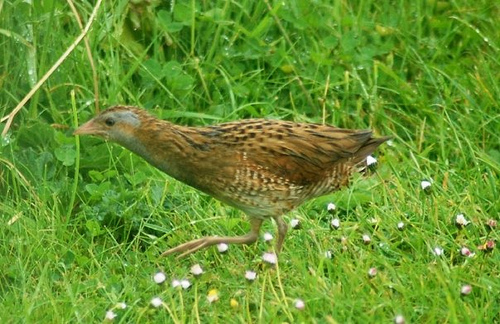Facts About Corn crake
The corn crake, also known as the corncrake or landrail, is a medium-sized bird belonging to the rail family. It breeds across Europe and Asia, migrating to Africa during the winter months. This elusive bird prefers grassland habitats and nests on the ground, laying between 6 and 14 cream-colored eggs adorned with rufous blotches. Unfortunately, modern farming practices have led to a decline in corn crake populations, as their nests are often destroyed. The corn crake is omnivorous, feeding on invertebrates, small frogs or mammals, and plant material.
The taxonomy of the corn crake is quite complex, with its closest relative being the African crake. One of the most recognizable features of the corn crake is its distinctive call, a loud "krek krek." The bird has a wide breeding range, primarily in Europe and central Siberia, and it winters in Africa. Despite population declines in Europe, the species is listed as "Least Concern" on the IUCN Red List, thanks to stable populations in Russia and Kazakhstan.
Spotting a corn crake in its natural habitat can be challenging because it often stays hidden in vegetation. Interestingly, when threatened, it may exhibit a behavior known as feigning death. During the breeding season, male corn crakes are known to have multiple mates and fiercely defend their territories. Conservation efforts currently focus on reducing threats such as habitat loss and adjusting mowing schedules to protect nests. Predators of the corn crake include feral cats and birds of prey, and they also face threats from parasites like flukes and parasitic worms.

 Namibia
Namibia